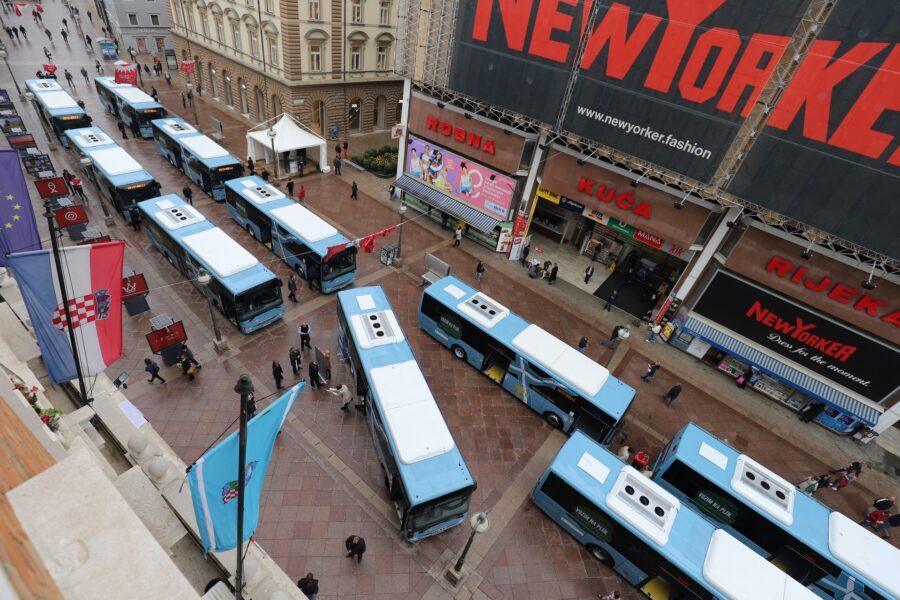
The main objectives of the study conducted from 15 February to 31 May 2021 were to investigate the readiness of the 20 largest Croatian cities for the green transition and provide an insight into the current situation in the field of energy.
The research covered Zagreb, Split, Rijeka, Osijek, Zadar, Velika Gorica, Slavonski Brod, Pula, Karlovac, Sisak, Varaždin, Šibenik, Dubrovnik, Bjelovar, Kaštela, Samobor, Vinkovci, Koprivnica, Đakovo and Vukovar.
According to population estimates, cities are additionally divided into categories: large, medium and small cities.
The readiness index of the cities for the green (energy) transition includes five individual fields that were under review: Strategic Energy Planning, Energy Production from Renewable Energy Sources, Energy Consumption in the Building Sector, Energy Consumption in the Transport Sector and Energy Consumption in the Public Lighting Sector.
In the category of large cities, Osijek and Rijeka achieved a higher overall readiness index compared to Zagreb and Split
The City of Rijeka is highlighted as an example of good practice in realising the main goals of the green transition in Europe and the Republic of Croatia owing to the fact that since 2016 to date it has renovated 20 kindergartens and schools and the “old” building of the Civic Museum supported by European funds. The preparation of project documentation for the energy renovation of 15 schools and kindergartens was also financed by EU funds, which leads Rijeka to the very top of the public sector as regards its participation in EU projects supporting energy renovation of public buildings. The implementation of these projects has reduced energy consumption in public sector buildings, at the same time contributing to the creation of a favourable microclimate at work, extending the life of the building, reducing building maintenance costs, reducing expenses for financing energy consumption, reducing energy consumption, reducing CO2 emissions and saving thermal energy for heating over 65%.
According to the criteria for adopting strategic documents in the field of energy and their public availability, Zagreb, Rijeka and Osijek were among the big cities with the same number of points.
In addition to Zagreb, Rijeka dominates among large cities in the transport sector where CO2 emissions were under review
Also, Rijeka, along with Zagreb, dominates among large cities in the transport sector in which energy consumption, CO2 emissions, the number of public transport lines and the number of filling stations for alternative fuels in the city were under review.
The analysis of the readiness of Croatian cities for the green (energy) transition carried out by the consulting company Apsolon is the first such research in Croatia and was prepared with the intention to determine the current situation in light of the European Green Plan, a new growth strategy published by the European Commission in late 2019 and to contribute to a better understanding of the real situation, needs and plans of Croatian cities for the green (energy) transition, which is also in the focus of the development strategy of the Republic of Croatia until 2030.
A video in which research is presented is available on the YouTube channel of the consulting company Apsolon, and on their website the entire Analysis of the readiness of Croatian cities for the green (energy) transition.

